Quantitative PCR has traditionally been performed in 96 well plates on $40,000 instruments that are the size of a desktop printer. Since it is difficult to move THC positive cannabis samples across state lines (Hemp samples are legal), we had to become familiar with qPCR instruments that could move to the state that needed them.
This was critical to manage a viroid that is devastating Cannabis yield. Hop Latent viroid is a 256bp circular RNA and it wrecks cannabis plants via an RNA interference pathway we have been charting out at Medicinal Genomics.
In fact, it was this very project we were working on when our RNA-seq reads were not focused on known genes and we knew we had a problem in our RNA prep or RNA capture process. RNA-Seq should focus reads on genes that are expressed and we were getting reads that were genome wide and in non-expressed regions. To sort this problem out, we spiked mRNA vaccine into the RNA-Seq process. This identified a DNase step that failed to remove gDNA and screwed up an RNA-Seq run.
So to manage Hop Latent Viroid infections, we needed cheap and portable qPCR instruments that could ship to grows/labs instead of centralizing testing in Massachusetts. This also applies to independent vaccine contamination verification. Fortunately there are many providers of 16-48 well minicyclers that are small in footprint, run on 110V and under $12,000.
With Dr. Sin Lee confirming the sequence of the amplicons in our assay as being on target, the only detail left for 3rd party validation is the quantitation of the contamination with qPCR.
This post will highlight a few of these platforms.
One of our favorites is the BMS Mic/Myra system. This system uses magnetic induction for heating and cooling and a centrifugal detection system. This detection system is light weight and can be used on the international space station as zero gravity and traditional PCR detection methods are not friends. The fluid in traditional qPCR systems does not stay in wells when you heat and cool it in zero gravity. Centrifugal detection can run with the instrument upside down.
It has an optional liquid handling robot (Myra) that sets up all the PCRs into their low volume tubes. This affords robust 10ul reactions and we’ve even seen 6ul reactions perform as well. This is an important aspect of qPCR as the human setup of the reaction is where it is most prone to contamination.
Because of its low volume and magnetic induction, it can ramp temperatures faster than traditional Peltier block cyclers such that 35 cycles can be recorded in 25 minutes. Two of these detection Cubes (Mics) can be daisy chained to a robot and flip around 48 tests every 25 minutes.
Another product we only recently have experience with is the MYGO mini. It doesn’t have the robotics setup up but is an attractive low cost instrument.
It has 16 wells that use Peltier cycling and uses traditional Epi-Tubes. It can detect 2 channels. The Mygo Pro handles more tubes and offers 5 detection channels.
The most affordable instrument on the market is the Chai Bio. 16 wells in strip tubes (2x8) with 2 color detection.
We recently ran the Vaccine detection assay described in our Preprint on this device.
You can see the vector amplicon with 5ul of input is 17-18 CTs with the NTCs not detected or detected at CT 37.3. This 20CT offset shows a 1 million fold more vector DNA than what our water samples show. As Dr. Sin Lee noted, some PCR polymerases are contaminated with their bacterial plasmids used to express the polymerase and this likely causes some background signal. We also see this in 1/2 of the Spike NTCs for the Moderna sample so we may just be on the single molecule contamination front where things are fractionally positive due to poisson. There may also be some inhibition of the LNPs in qPCR. These were direct additions of the LNPs to a 13.8ul qPCR Reaction mixture. You can see the response to 1ul and 5ul is less than 1 CT apart (should be more than 2CTs apart) which is a sign of LNP inhibition.
In conclusion, we have put primer sequences public for anyone to download and we screened this assay against one of the lowest cost qPCR instruments available on the market ($8K). This should enable the most decentralized approach for other labs to reproduce this result. Independent reproduction trumps peer review every time and we are already seeing this occur faster than the peer review process.



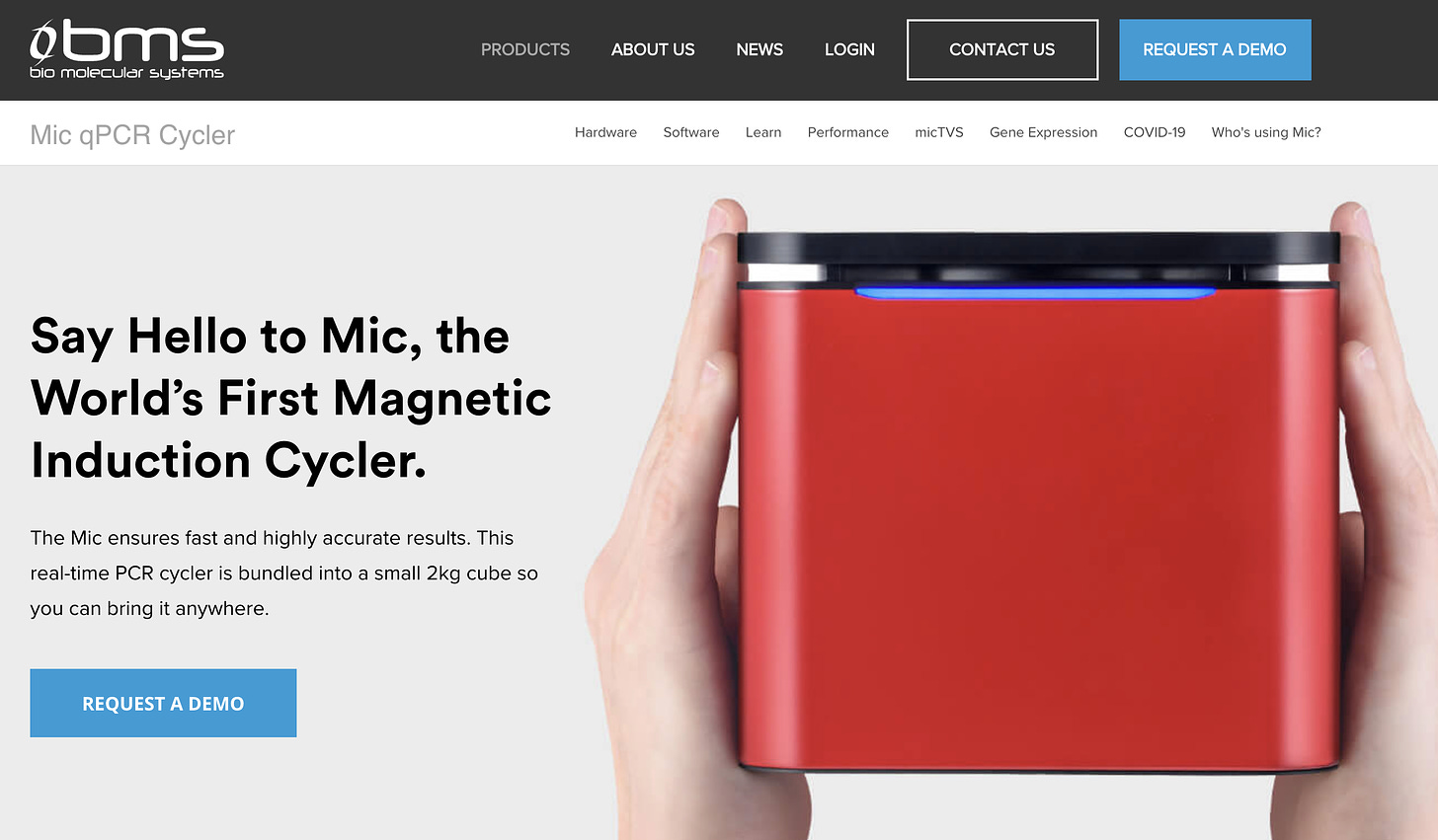
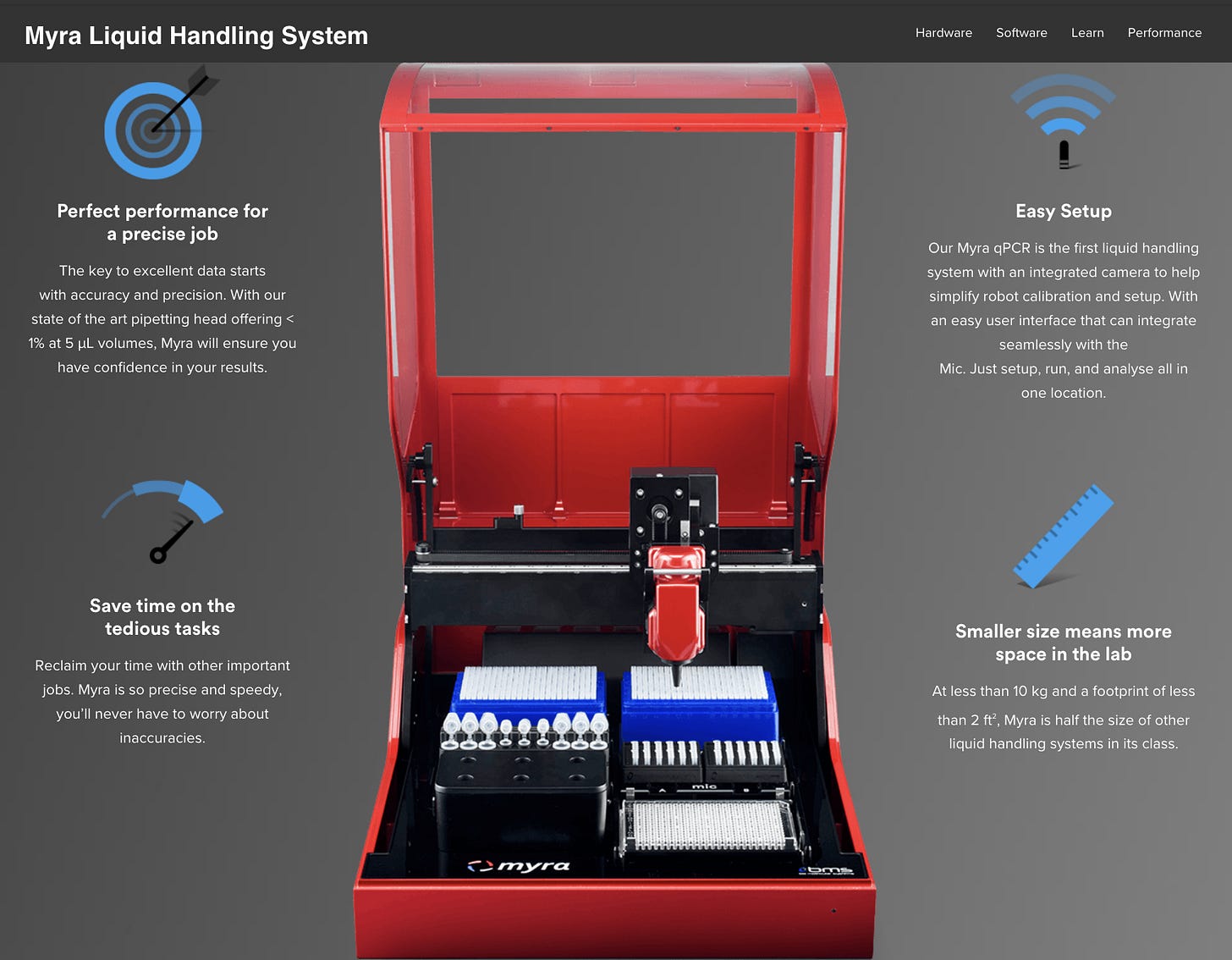
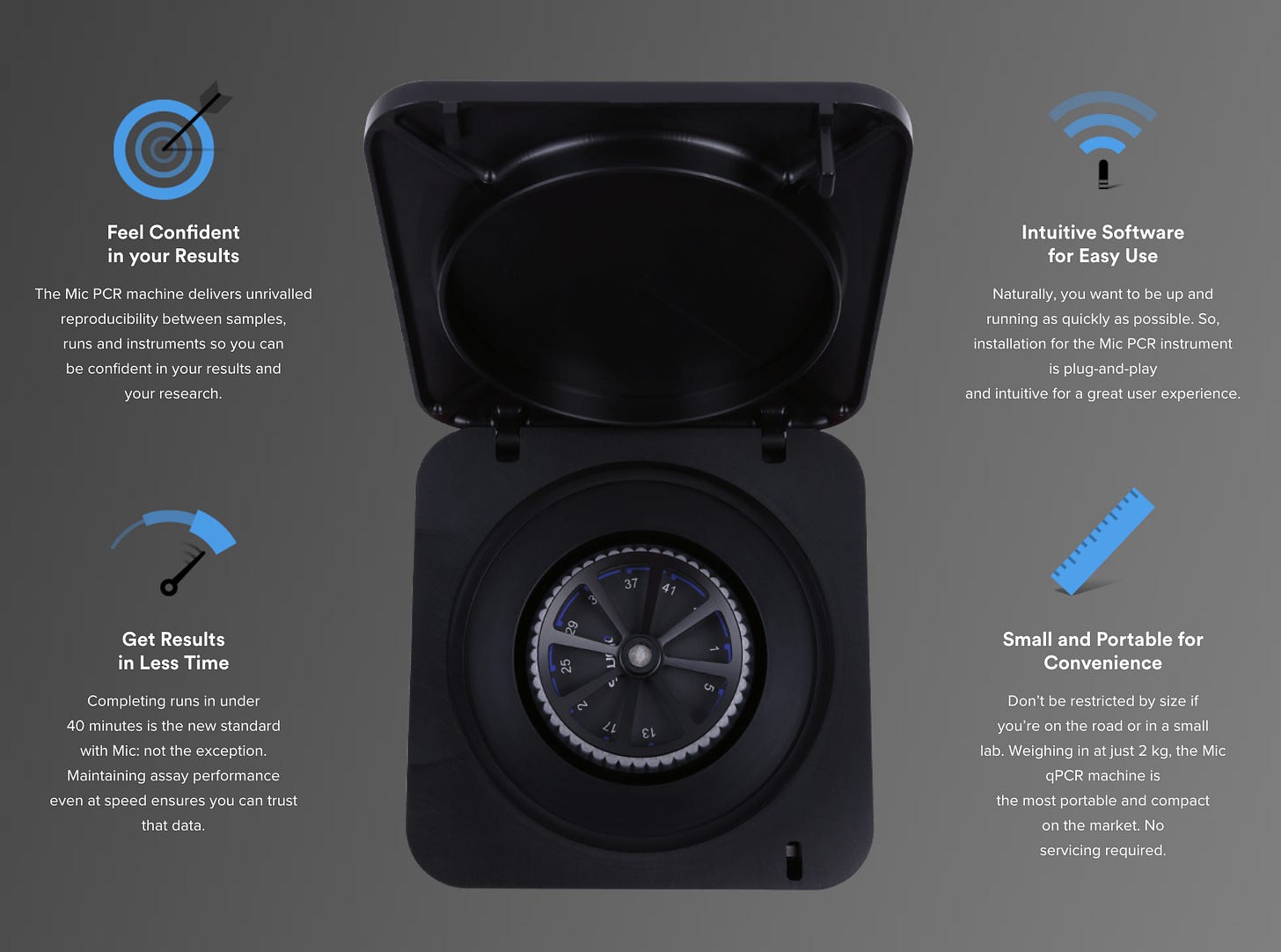
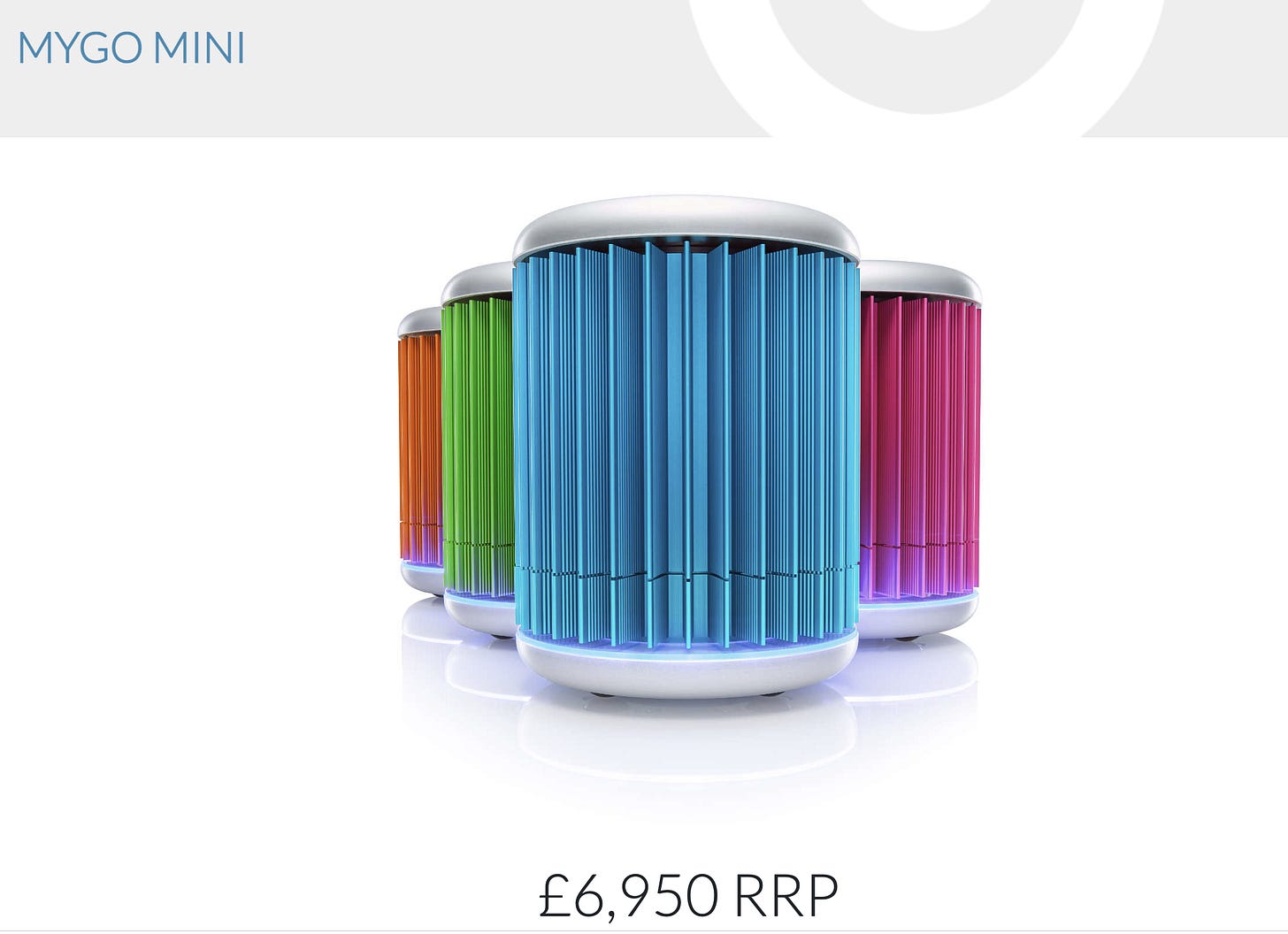
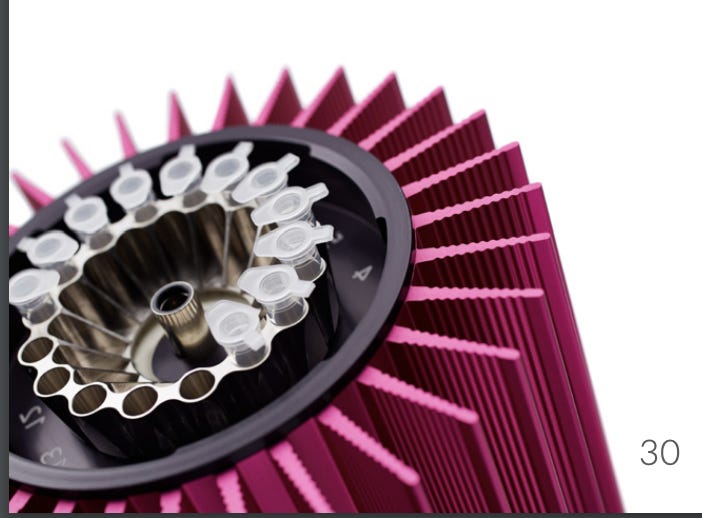
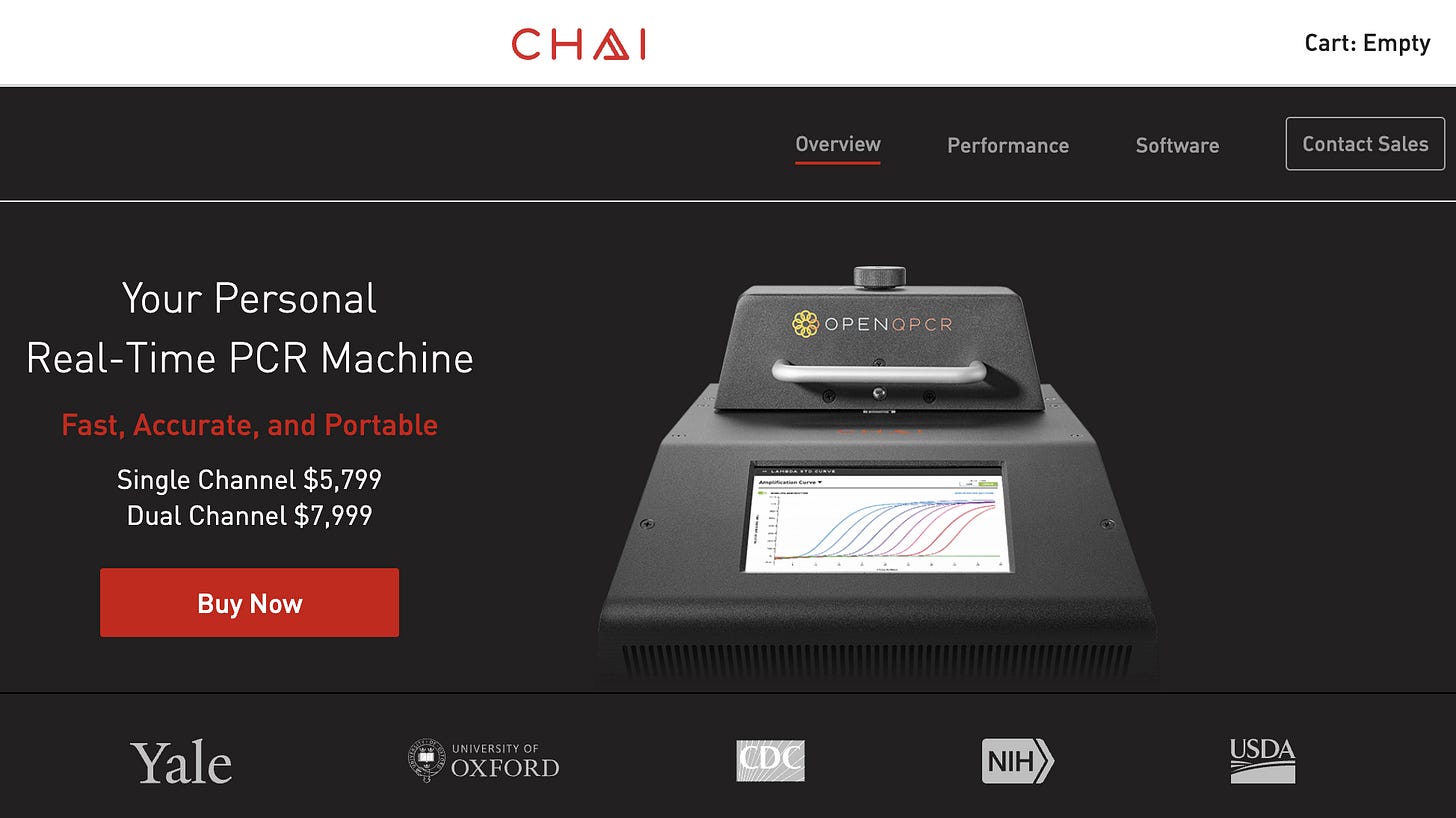
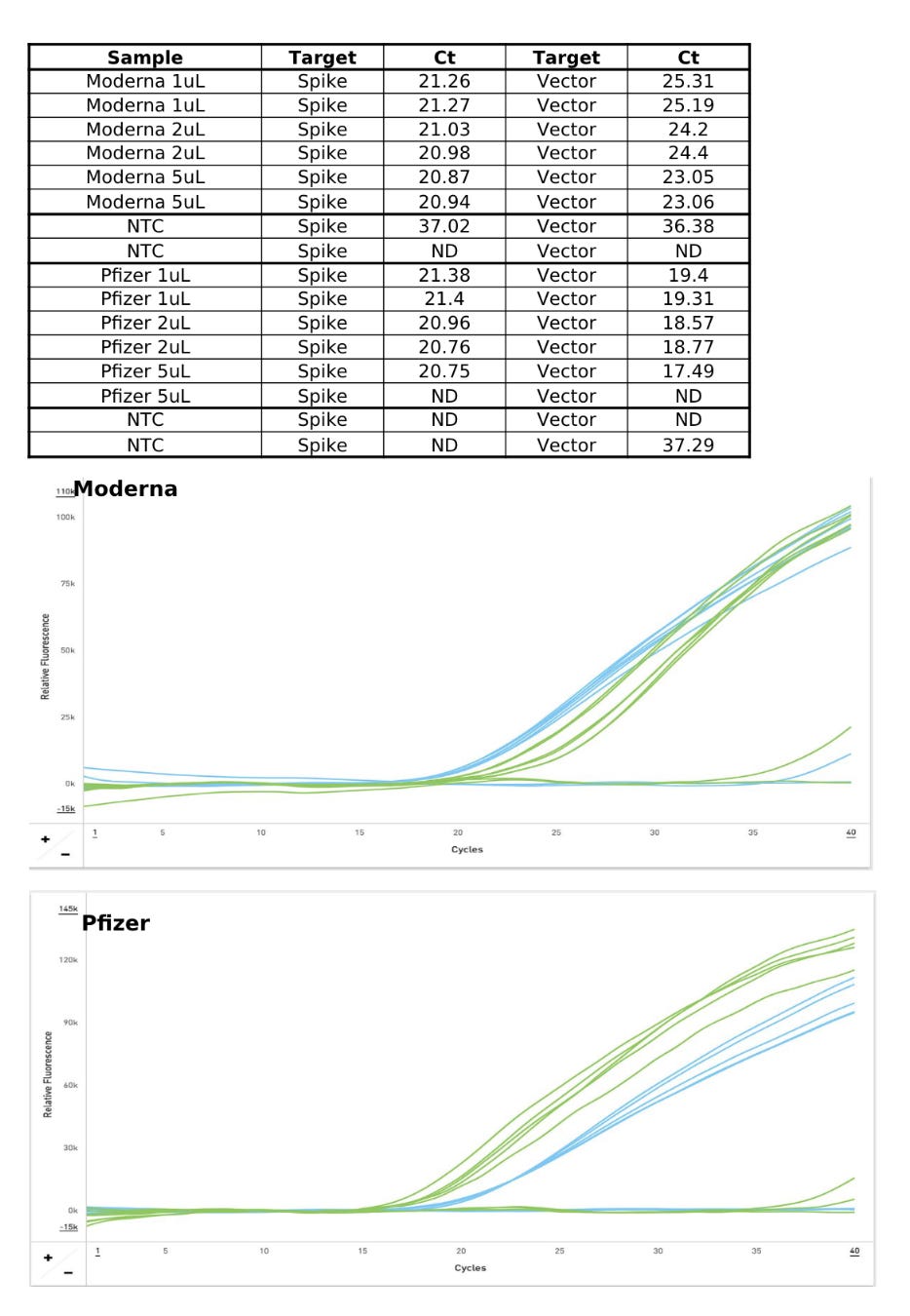
Good old 7900HT in working order cost few hundred on eBay. Can’t beat that.
Amazing. Thank you Kevin. Peace.